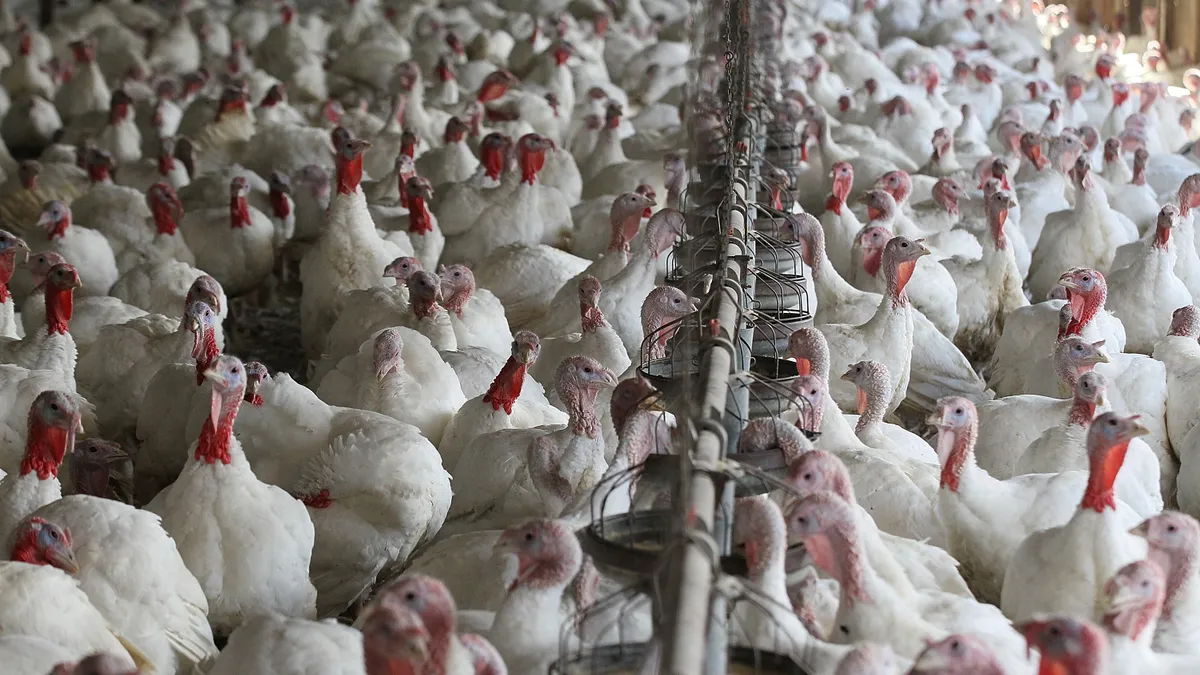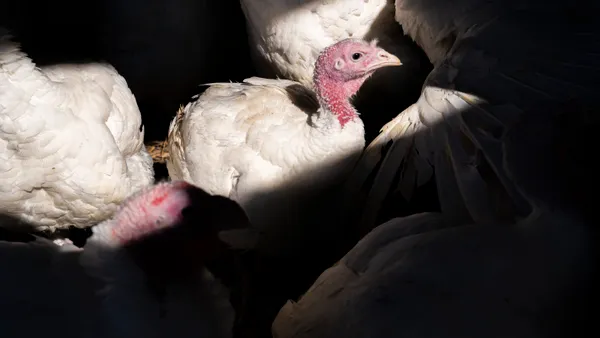Dive Brief:
-
Three detections of highly pathogenic avian influenza were reported in October after months of no cases, affecting thousands of turkeys raised for meat production and raising farmer concerns.
-
The U.S. Department of Agriculture confirmed two cases at a commercial farm in Sanpete County, Utah on Oct. 6, resulting in the deaths of 141,800 turkeys to prevent the spread of the disease. The agency reported another case at a turkey farm in Jerauld County, South Dakota two days prior, leading to the culling of more than 47,000 birds.
-
The contagious disease, often spread by migratory waterfowl, can reach commercial operations if birds come in contact with infected surfaces or materials. A widespread outbreak last year led to supply constraints and consumer price hikes for poultry products, most notably eggs.
Dive Insight:
Highly pathogenic avian influenza, also known as bird flu, is resurfacing as producers continue to rebuild flocks from last year's outbreak, considered the worst on record.
A total of 58.49 million birds raised for meat or eggs were depopulated as of Feb. 24, 2023, according to USDA. Nearly 76% of the total came from table egg operations, sending prices skyrocketing earlier this year as the U.S. grappled with inflationary pressures.
Bird flu is a serious biosecurity hazard for commercial and hobby growers, and is often fatal to chickens. Some strains are transmissible to humans, but no cases have been reported in the U.S.
While detections have cropped up occasionally in backyard flocks throughout 2023, the last case on a commercial farm prior to last week was in April.
“It is unfortunate to see new cases of Avian Flu in Utah again this year and affecting Utah’s turkey farmers,” Daniel Christensen, a veterinarian with the state’s department of food and agriculture, said in a statement. “Our department is working hard to help this farm handle this situation as quickly and safely as possible.”
Commercial growers are encouraged to disinfect their shoes, clothes, hands and work materials to keep germs away from their flocks, according to USDA guidance. They are also encouraged to limit visitors, avoid wild birds and pests and have a biosecurity plan in place.
Whenever a detection is found, USDA said it works with federal, state, local and industry partners to quickly respond and limit the spread of the virus. Indemnity payments are available to affected growers.











